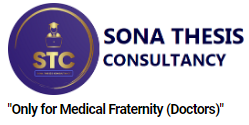
Menu
Poster / PPT Presentation
Both posters and PowerPoint (PPT) presentations are effective tools for conveying information visually, whether in an academic, professional, or casual setting. Here are some key points STC consider for each:
Posters:
- Purpose:
- Primarily used for academic conferences, symposiums, or events to visually present research findings or key information.
- Design Elements:
- Visual appeal is crucial. Use clear, high-resolution images and readable fonts.
- Organize content logically with a clear hierarchy of information.
- Use a consistent color scheme and style.
- Content:
- Include key elements like title, author(s), introduction, methods, results, conclusions, and references.
- Utilize graphs, charts, and images to illustrate findings.
- Keep text concise, using bullet points or short sentences.
- Size and Format:
- Standard poster sizes are often around 36×48 inches or 24×36 inches.
- Ensure the poster is easily readable from a distance.
- Interactivity:
- Be prepared to engage with viewers and answer questions during a poster session.
- Consider adding QR codes for supplementary online material.
- Printing:
• Ensure high-quality printing to maintain visual clarity.
• Proofread thoroughly before printing.
PowerPoint (PPT) Presentations:
- Purpose:
- Used for presentations in meetings, conferences, classrooms, or business settings.
- Design Elements:
- Choose a clean and professional design template.
- Consistent font style and size for readability.
- Use visuals sparingly and purposefully.
- Content:
- Follow a structured format with a title slide, introduction, main points, conclusion, and references (if applicable).
- Use bullet points, images, and charts to enhance understanding.
- Limit text per slide to avoid information overload.
- Slide Transitions:
- Keep slide transitions simple and professional.
- Use animations sparingly and strategically.
- Delivery:
- Practice delivering the presentation to ensure a smooth flow.
- Time yourself to stay within allocated presentation time.
- Interactivity:
- Depending on the setting, incorporate interactive elements such as polls or Q&A sessions.
- Handouts:
• Prepare supplementary handouts for the audience to take away.
- Technology:
- Ensure compatibility with the equipment at the presentation venue.
- Have a backup plan in case of technical issues.
STC understands, both posters and PowerPoint presentations are tools to enhance communication. STC tailor your approach based on the specific audience, context, and purpose of the presentation. Practice and preparation are key to delivering a successful presentation, regardless of the format.